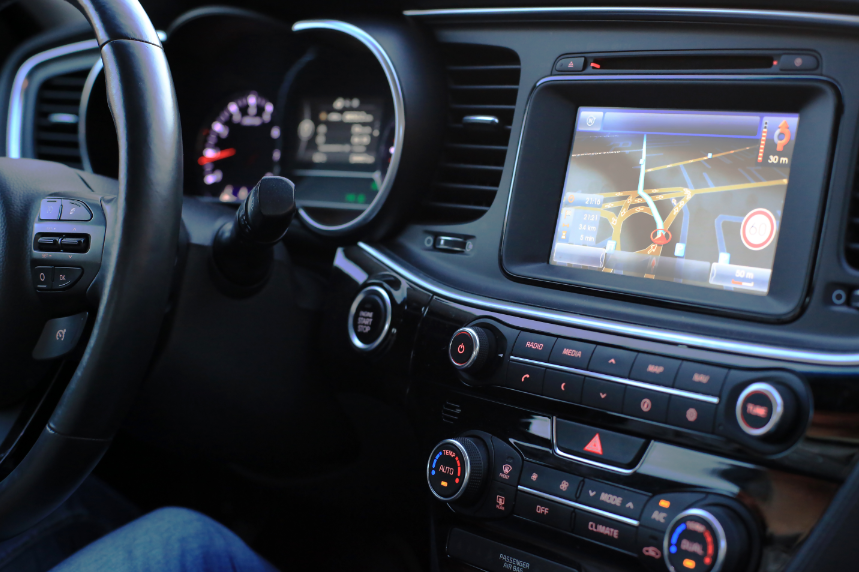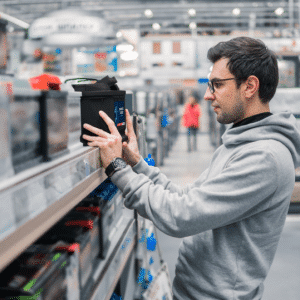
Las Vegas may be busy preparing for its first-ever F1 race in late November, but that’s not the reason the automotive industry is turning its eyes to the Vegas Strip this month. The annual Automotive Aftermarket Products Expo (AAPEX) will be held at The Venetian October 31-November 2, with experts across the industry gathering to see the latest technologies powering transportation – and Stryten Energy is joining them as an exhibitor.
In the lead up to the event, here are two trends Stryten Energy believes will be front and center for the automotive aftermarket retailers and distributors:
The number of vehicles with start-stop technology will continue to increase
While much of the attention has been on the electric vehicle and the lithium batteries powering them, lead batteries – in all gas-powered vehicles and nearly all electric and hybrid vehicles – continue to play a vital role in the path to sustainability within the automotive industry.
Automakers have improved emissions and fuel economy over the past five years with the utilization of a wide array of new technologies, including start-stop functionality. The rise of start-stop capabilities is a perfect example of the lead battery’s importance. Cycling lead batteries enable the vehicle’s motor or engine to turn off when the driver is stopped, while continuing to operate all vehicle accessories, and turn back on seamlessly when the driver takes their foot off the brake. The Consortium for Battery Innovation found start-stop technology can eliminate nearly 6.7 million tons of emissions each year in the U.S. alone, and that number is growing as the market share of start-stop enabled vehicles increases.
In fact, half of new vehicles produced in model year 2021 included start-stop technology, according to the EPA. With the market for stop-start technology expected to grow at a 5.7% CAGR to $58.8 billion in 2027, demand for cycling lead batteries will also remain strong throughout the decade.
“As consumers consider more eco-friendly automotive solutions, it’s important we don’t forget just how much of an impact that lead batteries can have on sustainability,” said Dan Autey, Executive Vice President at Stryten Energy. “Start-stop technology powered by cycling lead batteries not only reduces emissions, but also reduces fuel waste from idling engines. Lead batteries are the most recycled consumer product in the U.S. with a nearly 100% recycling rate that keeps 160 million batteries out of landfills in the U.S. every year.”
EFB’s market growth will power increasingly energy-draining auto features
Not all lead batteries are designed and manufactured the same – an important consideration for automakers in an era when vehicles come with more bells and whistles than ever before. Start-stop functionality is just one example. Features such as heated seats, navigation systems, backup cameras, blind spot monitoring and more also place a strain on the battery.
The conversation around start-stop technology often gravitates toward absorbed glass mat batteries (AGM), but enhanced flood batteries (EFB) can be just as effective – if not more effective – in shouldering power needs. Partial state-of-charge operation is common in stop-start applications. During independent tests, the total average capacity output of EFB was 50% greater than AGM for an equally sized battery. This finding indicates EFB not only can yield as many cycles as AGM but can also hold its total capacity to a higher level without decay.
When replicating real-world start-stop usage, independent testing showed EFB offers charge acceptance capability that is equal to AGM batteries. EFB will also last 52% longer than an AGM battery in high-temperature environments.
Nearly 30% of new vehicles built with start-stop functionality in the U.S. are equipped with an EFB and based on the growth trends over the last decade, EFBs are more likely to meet growing demand than AGMs.
“Drivers expect comfort and performance in their vehicles, but those features don’t come without an electrical cost. EFBs are proven to resist the cycling-related failures that are associated with these increased power demands,” Autey said. “As EFBs become more prevalent, they’ll become the market’s go-to for today’s vehicles with start-stop, advanced safety features and other electrical needs.”
Chat with us at AAPEX
If you’d like to discuss these trends further or explore how Stryten Energy is positioned to power aftermarket features, stop by booth 2620 at AAPEX. Schedule a meeting with us here or by contacting Stryten Corporate Communications at stryten.corporatecommunications@stryten.com.







